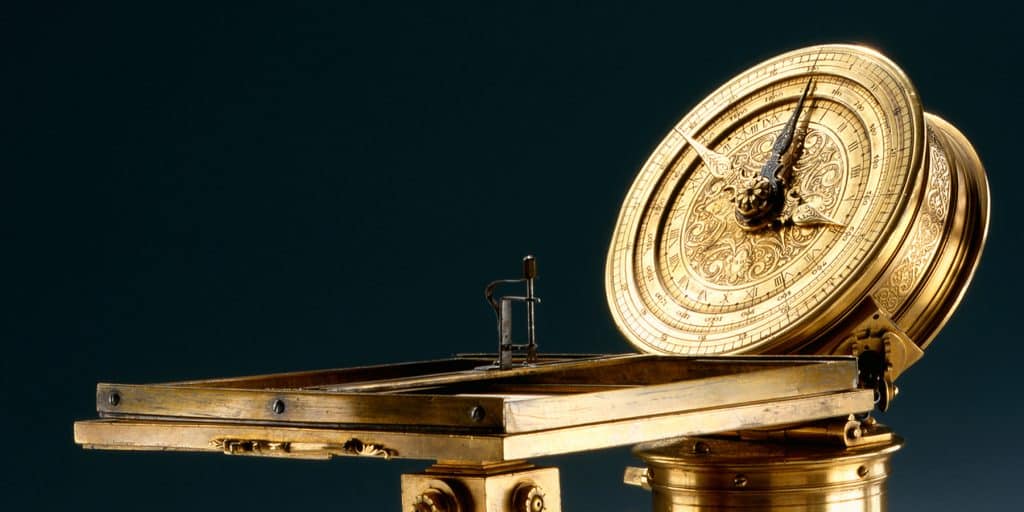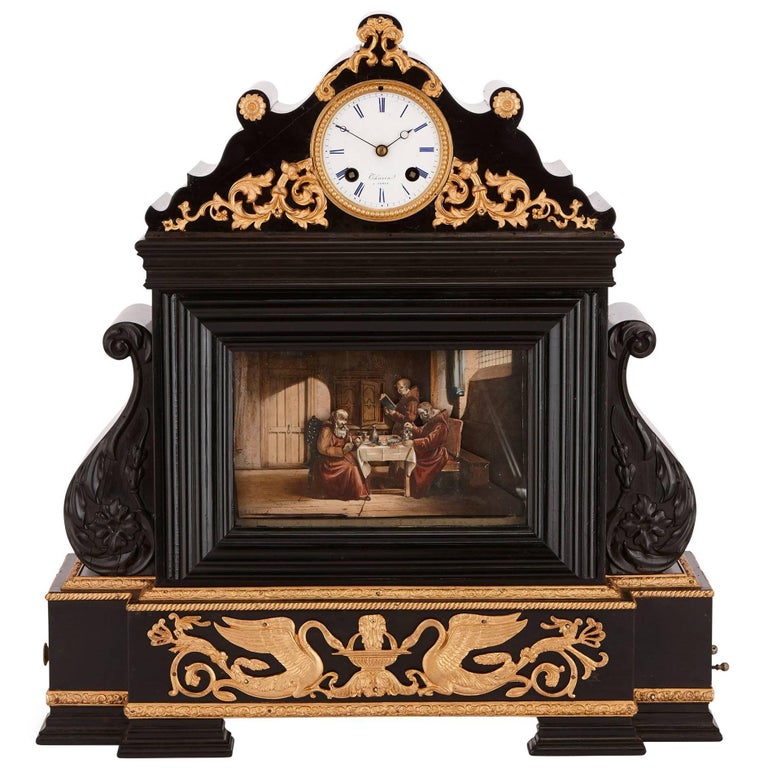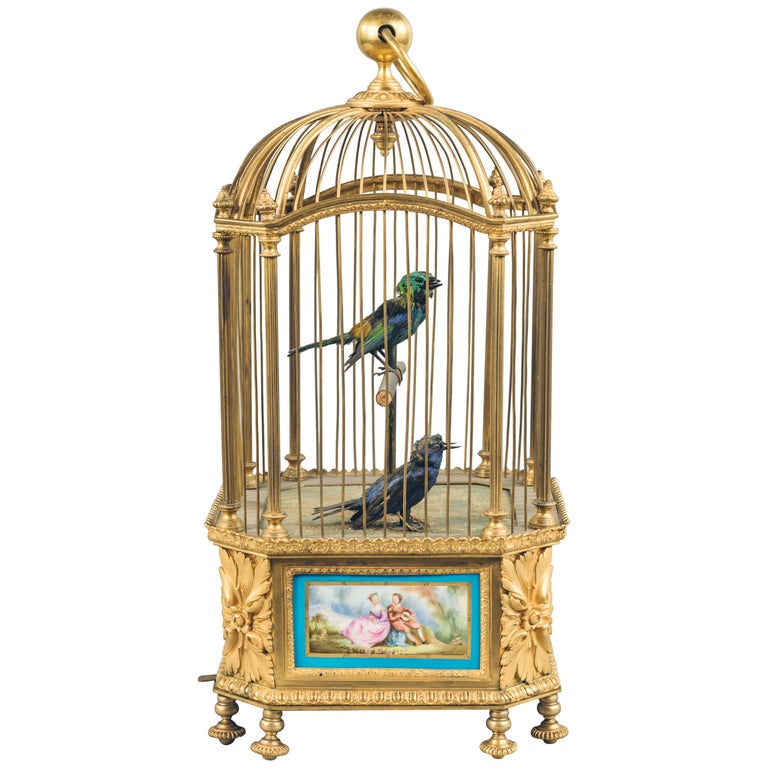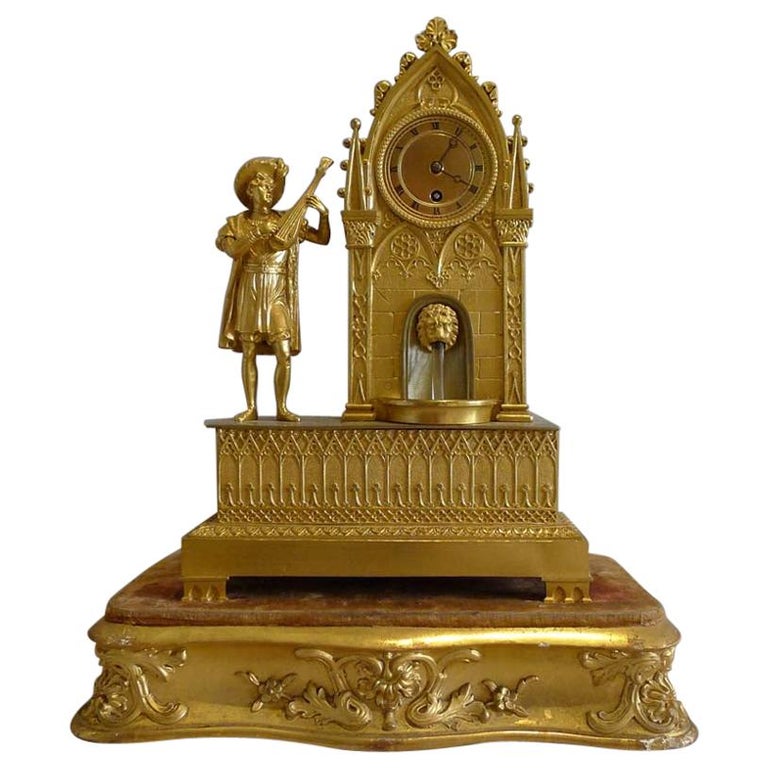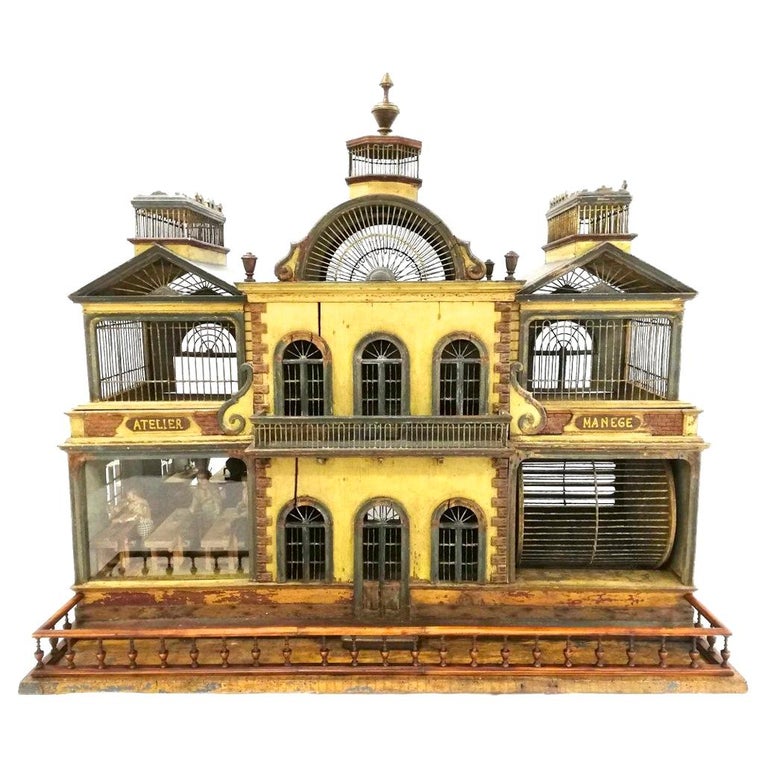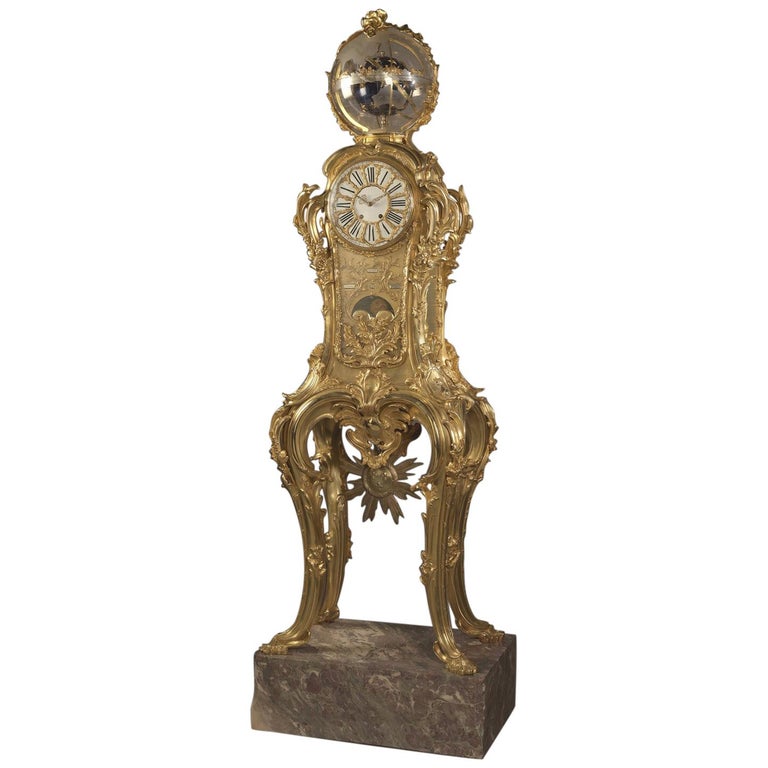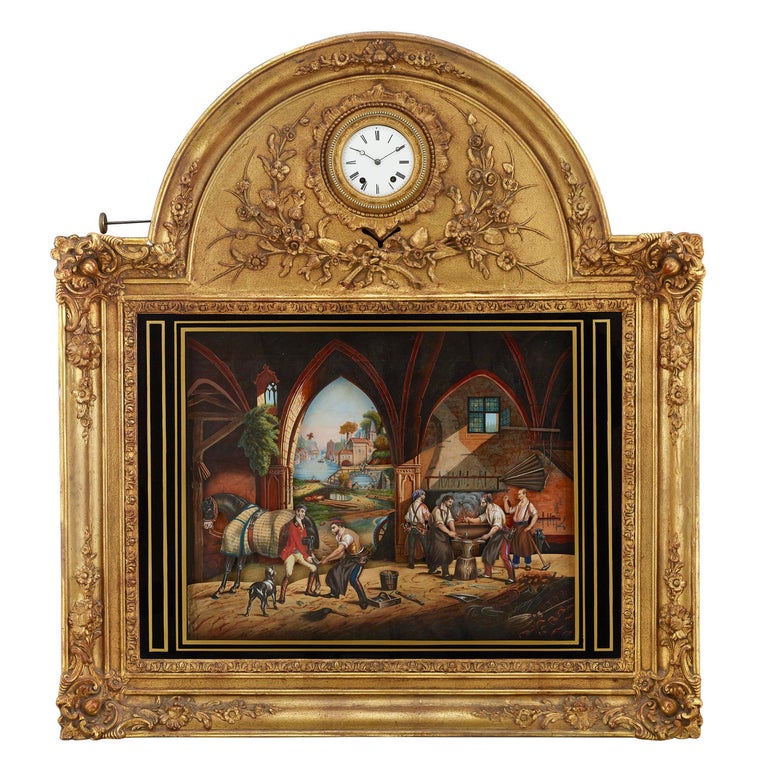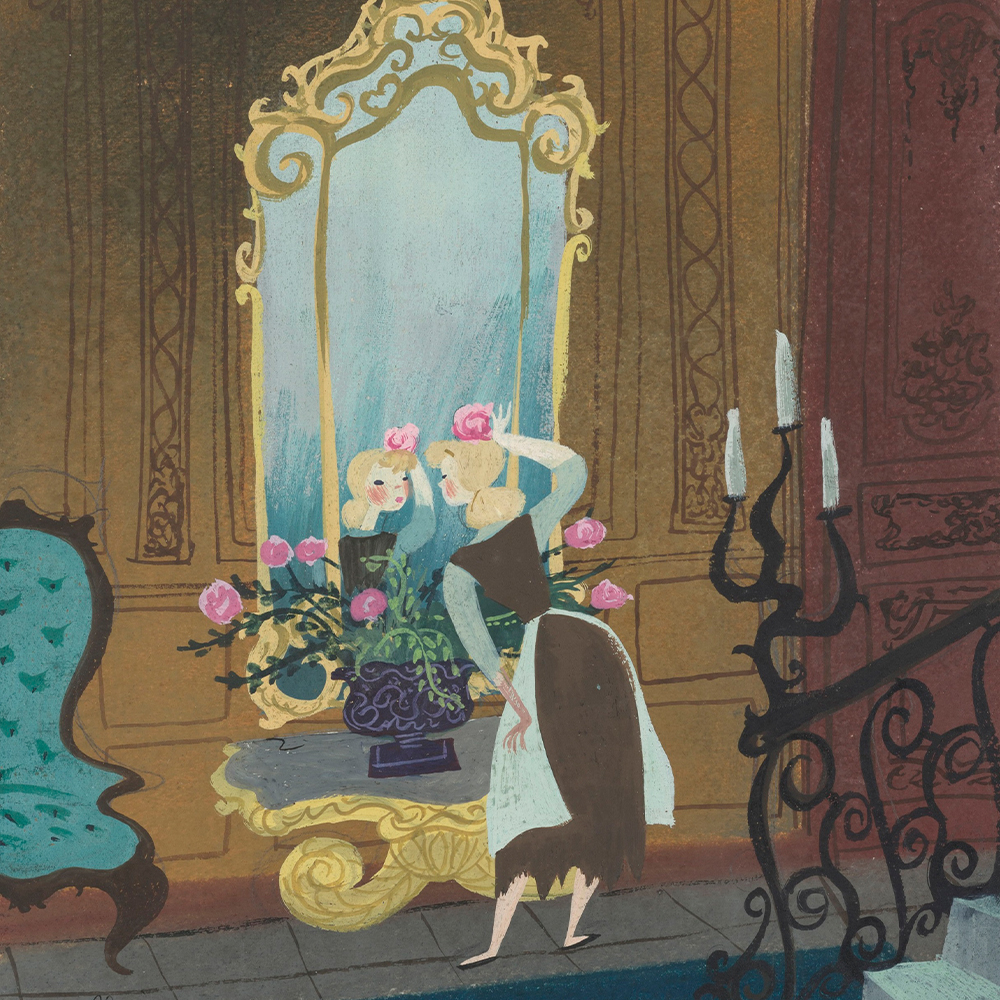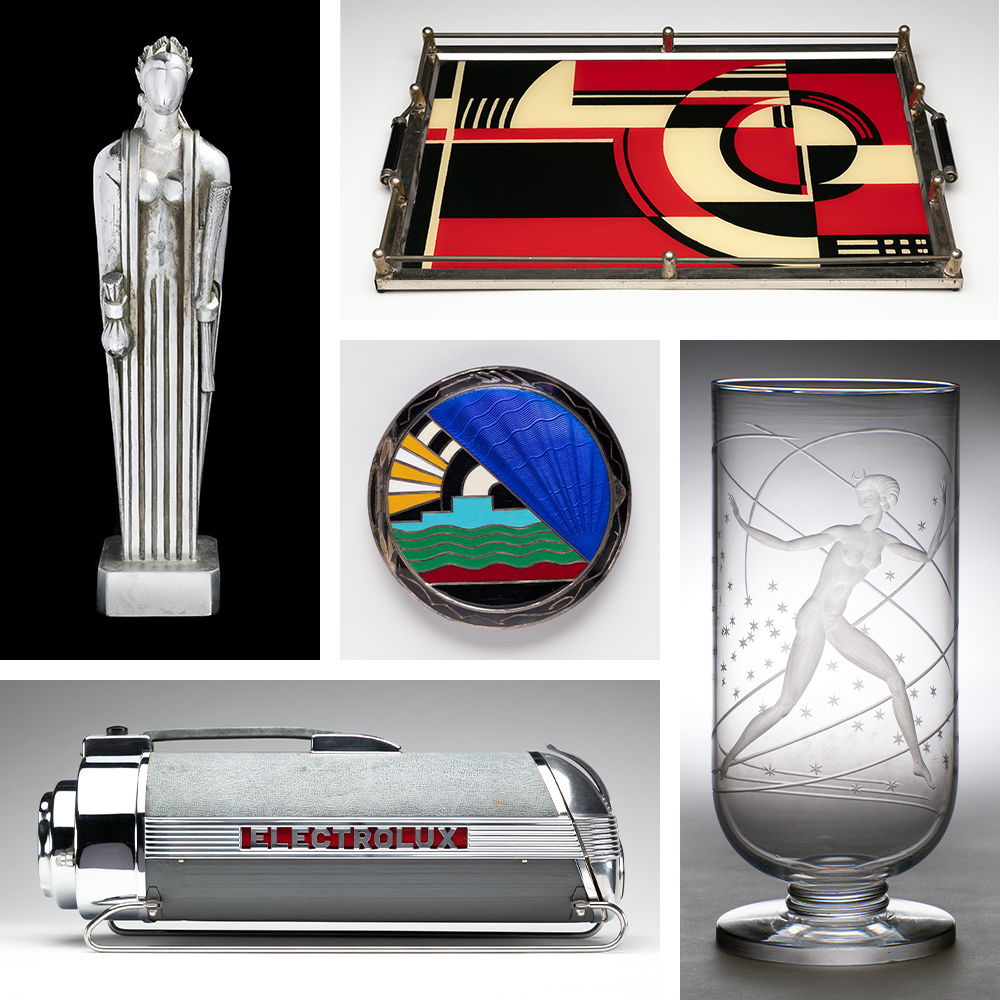February 16, 2020Sixteen large clocks in museum cases fill the dimly lit gallery. Snatches of music and chimes reverberate in the air. On the wall beside three of the clocks are videos divulging their secrets, with a gloved hand turning a wind-up key to set them in motion, gears spinning and a bellows pumping air. In one video, five commedia dell’arte figurines dance to a peppy Baroque tune, while behind them, mirrored panels create the illusion of a party, a roomful of these characters turning and spinning. A museum visitor nods her head to the music. Beneath the notes of the miniature spinet and organ, the clock’s mechanism clicks and whirs. The visitor steps away from the images on the video screen and leans toward the actual figurines in the case. They stand at the top of a deluxe timepiece that also includes two musical instruments, all housed in an ebony case accented with silver caryatids. This musical automaton clock, which was made in Germany circa 1625, is just one of the 170 wonders that vie for the attention of the museum-going crowd in “Making Marvels: Science & Splendor at the Courts of Europe.” And the exhibition, on view at the Metropolitan Museum of Art in New York until March 1, has indeed been drawing crowds. The show, and the book of the same name, feature princely treasures created between 1550 and 1750 that fuse opulent decorative arts with the cutting-edge technologies of the time. Princes all over Europe commissioned, collected and displayed these lavish marvels to showcase their own power.
Another gallery contains spectacular silver objects. Starting in the 16th century, European rulers commissioned furniture crafted from this metal for their banquet halls and treasuries. Wolfram Koeppe, the Marina Kellen French Curator in the Met’s Department of European Sculpture and Decorative Arts, explains that these large pieces were designed to impress guests and visitors. The Judgment of Paris Table (1659) is a rare surviving example — often, during economic downturns, such items were melted down and transformed into coins.
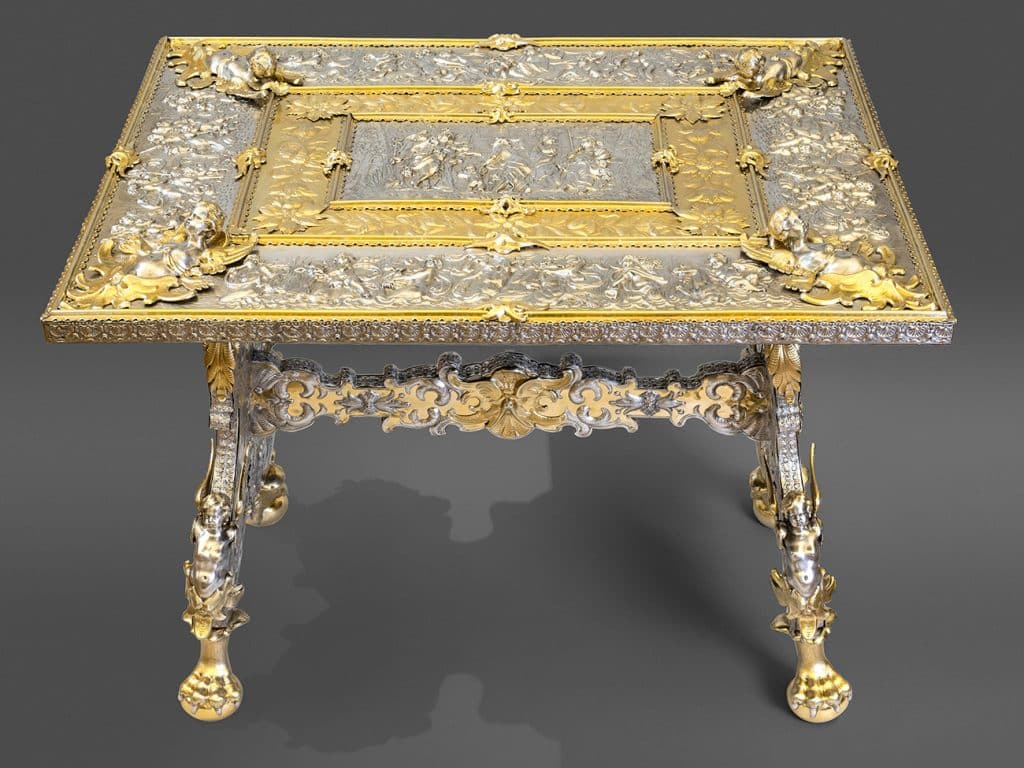
Silver furniture commissioned by European rulers, like the 1659 Judgment of Paris table, were often melted down later, during times of economic hardship, to turn into coins. Photo courtesy of The Met
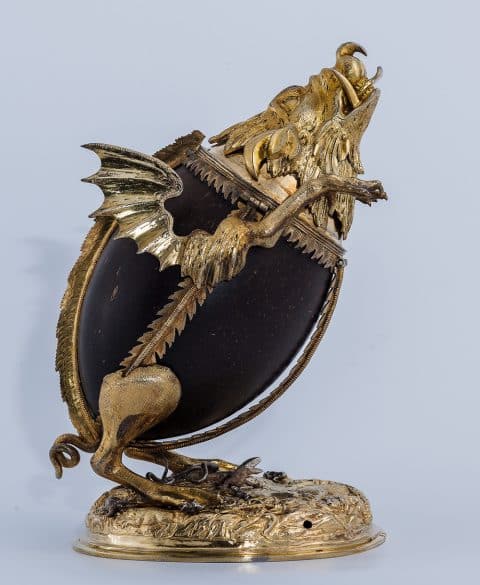
This grotesque wild boar and coconut cup, 1603–09, shaped like a hybrid boar, bat and aquatic creature, has been at Eltz Castle, in Wierschem, Germany, since 1738, when zoomorphic vessels were fashionable. Renaissance medical texts ascribed to coconut shells beneficial powers that would be transmitted to the liquid inside the cup. Photo by Martin Jermann
In addition to their wealth, princes showed off their erudition. The Kunstkammer, a room containing a notable collection of objects, developed as a place of both display and study. The contemplation and sensory experience of natural curiosities were considered paths to knowledge and mastery. Gilded-silver objects with animal features, such as a coconut-cup boar-monster featured at the Met, became fashionable in the mid-16th century. The shell of a coconut, which was an exotic rarity in Europe at the time, was thought to ward off evil and act as an antidote to poison. This grotesque cup in the shape of a comically ferocious boar with exaggerated canines has been preserved in the treasury of Eltz Castle, in Wierschem, Germany, since 1738.
Princes of the period used their vast resources to encourage technological innovation. They commissioned luxurious scientific instruments, including clocks, astrolabes, odometers, telescopes and alchemical furnaces, both for their personal use and as showpieces advertising their wisdom and fitness to rule. Because these rulers competed with one another in commissioning the most cutting-edge and spectacular technology, enormous leaps were made in the intricacy and splendor of these devices. The advances were particularly noteworthy in the realm of timekeeping instruments. Huge clocks were installed in urban centers to regulate everyday life, and smaller, table-size models filled Kunstkammer shelves. Koeppe points out in the show’s catalogue that these “refined works of art may have been called clocks, but many were actually hybrids, combining a complicated timekeeping movement with astronomical indications.” One of the most spectacular of these mechanisms from the period is the equation clock crafted by Jost Bürgi and Hans Jacob Emck in 1591 at the behest of Landgrave William IV of Hesse-Kassel, which was among the first such pieces to incorporate Nicolaus Copernicus’s then cutting-edge heliocentric model of the solar system.
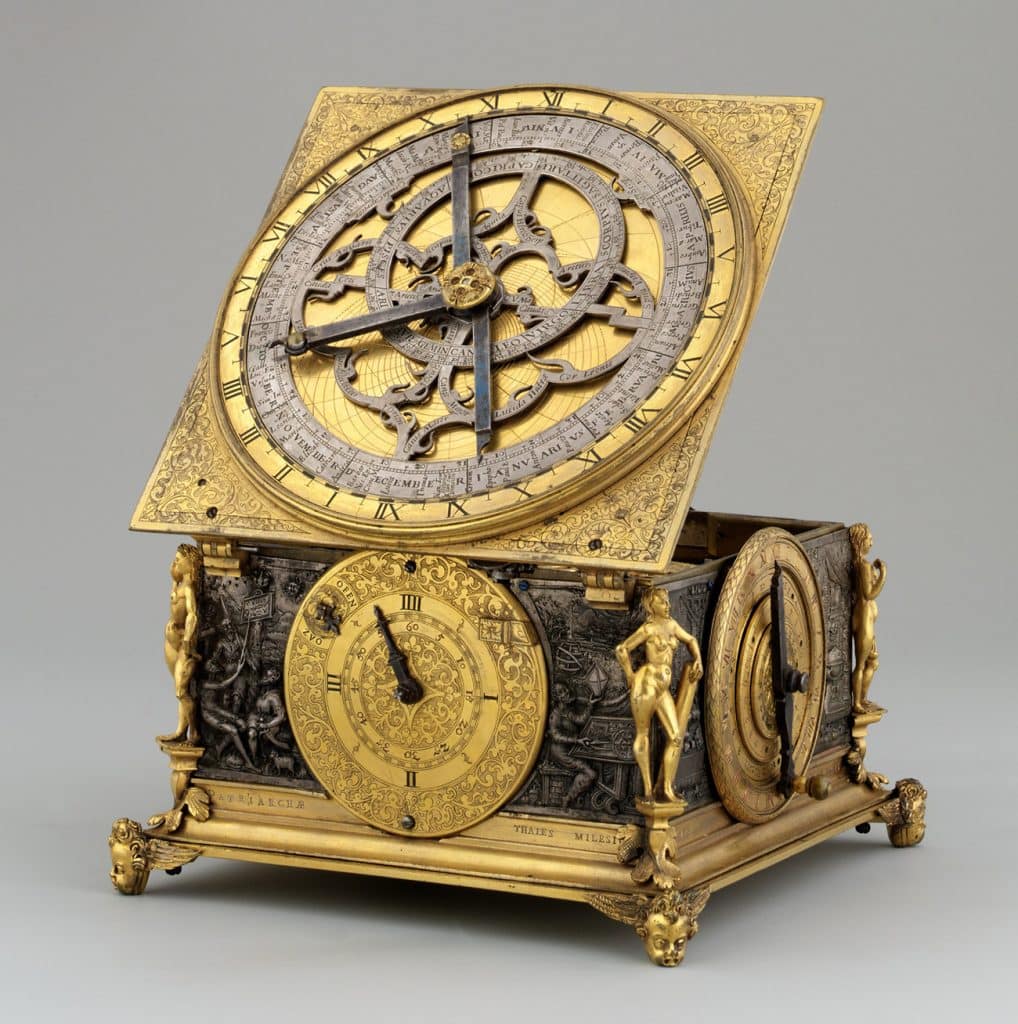
The 1591 equation clock made by Jost Bürgi and Hans Jacob Emck for Landgrave William IV of Hesse-Kassel, considered among the most accomplished astronomers of the 16th century, was the first such piece to have a moon mechanism based on Nicolaus Copernicus’s theory of the lunar orbit. Photo by Museumslandschaft Hessen Kassel, Astronomisch-Physikalisches Kabinett
A number of these clocks also featured automata, such as dancing figures or animated roosters; some, in fact, were more automata than timepiece, designed to entertain. A particularly elaborate example is the automaton clock in the form of Diana on her chariot, probably crafted in Augsburg, Germany, circa 1610. When the piece is wound up, the wheels on the chariot turn, the leopards harnessed to it bob up and down to mimic running, and the entire statuette propels itself forward. All the while, the goddess’s eyes move, as if she were looking for her next target. And then she fires her arrow. Crafted out of ebony and gilded bronze, the piece played a central role in courtly drinking games in which the guest nearest the arrow’s landing spot was required to drain his cup. In a more serious vein, these lively automata also fueled philosophical conversations at a time when the workings of clocks were considered metaphors for the way the universe and living beings functioned. God was even described as the greatest clockmaker, and princes debated with their guests whether the artisans’ use of clockwork to imitate life placed them on a par with the divine.
Automata were often specially commissioned as gifts, in an act of one-upsmanship (Look what I can have made!) or “to try to get closer to the ruler of another country,” says Koeppe, who notes that sometimes the prince sent the maker along with the automaton “to explain to the other court how the thing worked.” Whether these craftsmen were divine or merely divinely inspired, we can all agree they held the keys to wonder.
